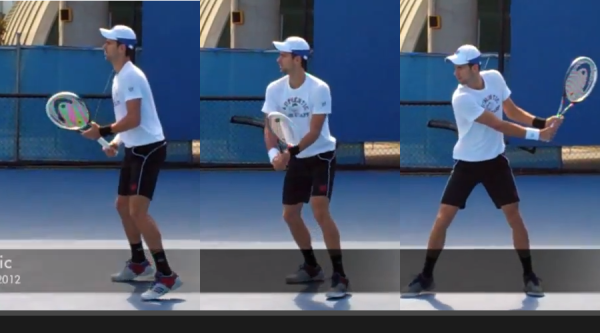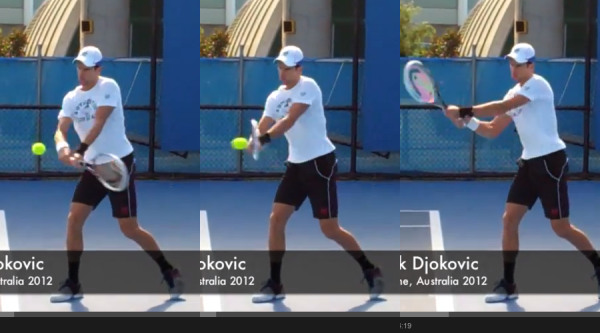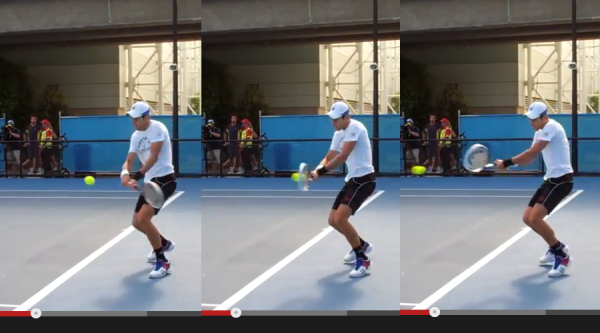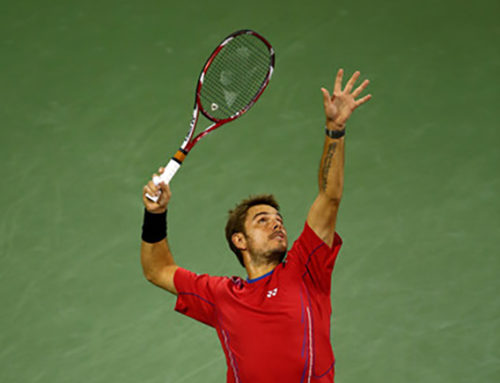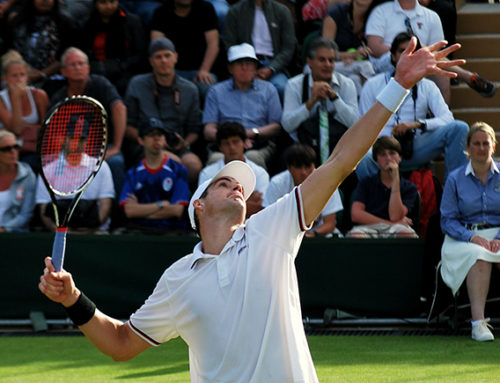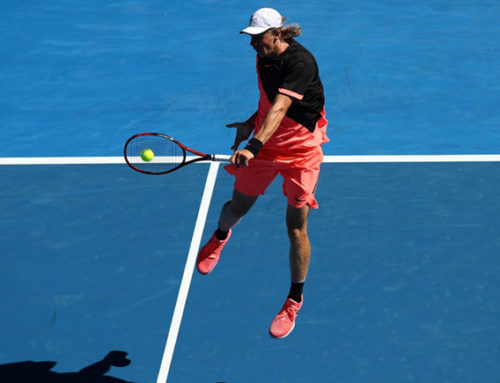There are several parallels between Pete Sampras and Novak Djokovic. Sampras had his Grand Slam breakthrough at the US Open in 1990, but would take a two-year hiatus before winning his second Slam title at Wimbledon in 1993. From there he went on to win one or more slams every year for a number of years on his way to reaching the lofty mark of 14 when he retired. Djokovic’s maiden Slam came in 2008 at the Australian Open. Similarly he had a two-year hiatus before winning his second Slam in 2011 – a year in which he won no less than three Slams – and has since added one more each in 2012 and 2013 at the Australian Open. The reason for this two-year gap for both men is quite simple – both Sampras and Djokovic won a Slam somewhat prematurely while their game wasn’t fully developed. In Sampras’ case he won through on the virtue of serving at a level the professional tour had never seen before – a level so high he was able to mask and protect his backhand which was decidedly sub-par at that time. For Djokovic he brought a great serve, forehand and movement that also served to mask what was, at the time, a weakness – his backhand.
Five years later in the aftermath of his generally comfortable Australian Open campaign (marred in truth only by the beating he took at the hands of Wawrinka despite winning the match), it is a very different story. Certainly we can attribute some of his rise to his vastly improved fitness. Djokovic has gone from being the man who retired from a sore throat in the semi-finals of a Masters event to being the Iron Man of tennis with a resplendent five-set record. However that is not the only reason for his rise to prominence. Now commentators refer to Djokovic’s backhand as a weapon and rightly so – he has turned it from a shot players like Federer and Nadal could take advantage of into a bonafide problem for those very same players. So what exactly is different, and how has it impacted Djokovic’s game?
The Preparation
To begin let’s take a quick look at the preparation phase of Djokovic’s backhand.
Djokovic has a very clean and simple preparation phase to his backhand. He starts in his ready position with his left hand on the throat of the racket. Upon recognizing the ball is coming to his backhand, he initiates with the shoulder turn and begins to slide his left hand down to the backhand grip position simultaneously. He doesn’t raise the racket head noticeably from his ready position height, instead drawing it around his body with his hip and shoulder turn until he is rotated 90 degrees to stand perpendicular to the net. On reaching this position he draws the arms further back and slightly upwards to the position you see in the far right panel above. You can see that he has dipped his left shoulder slightly, has good trunk rotation and great extension with the arms to the back. Also note the wrist position – a very important aspect of any good two-handed backhand. He has not yet broken the wrists and instead they stay in an upright position, the racket-head high. Clearly there is nothing wrong with this portion of his backhand so where did things used to go wrong, and what did he do to fix it?
The Importance of Follow Through
The short of it is that Djokovic really has two version of his two-handed backhand. One of them is very, very good offensively and resulting a driving ball with sufficient topspin to give him respectable margins. The other is technically shaky and results in unforced errors. The big shift we’ve saw between Djokovic of 2008 and Djokovic of 2011 is that he exaggerated the positive aspects of the first, and began to be more circumspect about his usage of the second. This section is entitled “The Importance of Follow Through” for a reason, so let’s take a look at the technically sound stroke first:
We see there the three frames – one immediately before contact, one at contact and the other immediately after (going left-to-right in that order). As we can see here Djokovic keeps a nice hip alignment, gets his hands and racket through the ball well before letting his shoulders clear around his axis of rotation. Critical to notice here is the slight closing of the racket face from the middle frame at contact to the follow-through frame on the far right. This is a great sequence of racket positions across the three frames, and what Djokovic has done a good job of doing the majority of his backhands in the past two years. Now let’s take a look at the other one:
It shouldn’t take long here to zero in on the critical third frame on the right. While Djokovic’s racket head looks the same in the first two frames (on the left and in the middle), we can see on the third frame things break down. Instead of closing the racket face slightly over as he follows through after contact, he opens it up. In on-court teaching I’ve termed this ‘scooping’ – the opening of the racket face through contact in the manner one might scoop ice-cream with a spoon. The problem is that doing so makes the outgoing trajectory harder to control and also robs the shot of critical topspin. This is the kind of contact that David Ferrer still gets on his backhand side very frequently, and it is a notoriously weak shot for a man who’s been so solidly in the top 10 for so long.
In the picture sequence immediately above Djokovic is somewhat on the run and not in great position – an understandable time to have less than ideal contact and follow-through. Backtrack five years however and this ‘scooping’ was more exaggerated and happened with far great frequency – especially in the forecourt. Federer used his short slice backhand to draw numerous errors from Djokovic in their early US Open meetings on the big stage, pulling Djokovic up in the court where he would then scoop the backhand either into the net or long.
The Adjustments
Djokovic made improvements on the backhand side in two ways. First he started to close the racket over the ball both more and more often. Whereas in the past he was given to scooping the ball on his backhand side with greater frequency and seeming at random, he really cut down on the frequency with which he did so. The second adjustment is he started being far more intelligent about which balls he scooped on. As mentioned above the scooping action flattens the contact out and takes away topspin. The resulting shot will also skid through the court more. It is far more effective when done on higher balls, when less net clearance is needed for the ball to come down into the court. The margins are greater on that shot, and it can be hit almost down-hill as a driving flat ball, particularly down the line. Whether by intention or accidental habit, Djokovic now does just that. He moves to the ‘bad’ backhand typically only when either stretched and short on options, or on those higher balls he can afford to be genuinely aggressive on.
Certainly the lion’s share of the credit goes to his improved fitness and mental attitude on the court. But no small amount should also go to the technical improvements he made on the backhand side.
